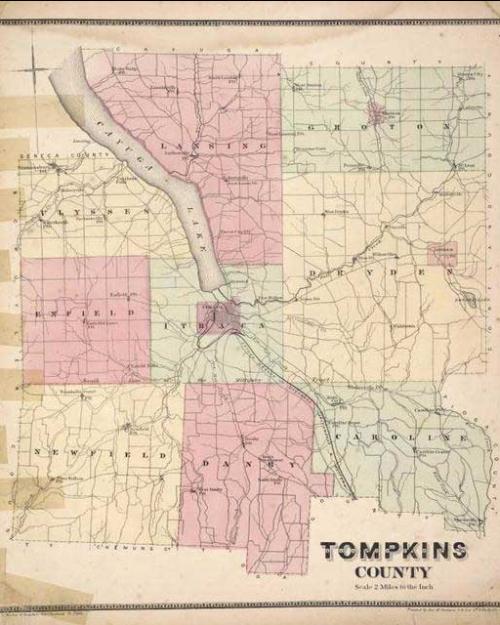As the pandemic recedes and the local economy reopens, workforce leaders shouldn’t settle for a return to business as usual, a faculty-led report, co-authored by Michèle Belot, a professor in the Department of Economics jointly appointed in ILR and the College of Arts and Sciences, advises officials in Tompkins County, home of Cornell’s Ithaca campus.
“That’s a temptation across the country,” said Ian Greer, M.S. ’03, Ph.D. ’05, senior research associate in the School of Industrial and Labor Relations and director of ILR’s Ithaca Co-Lab. “We don’t think that’s a good idea. One reason is that the labor market we had before the pandemic was extremely unequal.”
For example, consistent with national trends, workers of color were significantly less likely to earn a living wage than white counterparts in Tompkins County, the report’s research determined, with nearly 70% of Black workers making less than $15.37 an hour compared with just over 30% of whites. Workers of color also disproportionately held jobs vulnerable to layoffs or lower pay during the pandemic.
The 104-page report, “The New Possible: Innovative Workforce Development and Skills Maps for Tompkins County,” offers nine recommendations to the Tompkins County Workforce Development Board that seek to reduce racial disparities and wage inequalities, remove barriers to work and promote living-wage jobs in growth areas such as “green” manufacturing.
The county commissioned the research last fall as leaders planned for an eventual transition to a “more stable and confident 2021” following the pandemic’s economic shock, which included an abrupt tripling of local unemployment to more than 10% in April 2020, according to the report. The team shared its initial findings with the workforce board in February 2021 and submitted a final report to the county in June.
Although the county is recovering faster than New York state overall, the report urges local decision-makers to seize the opportunity to reimagine the regional economy.
“This is the moment to reflect on whether the county’s pre-pandemic ‘normal’ is in line with the aspirations of businesses, nonprofits, local residents and the local services infrastructure,” the researchers wrote.
The recommendations emerged from an analysis of 10 publicly available datasets from six sources, interviews with employers and workforce development organizations, and a survey of nearly 90 employers.
In addition to racial inequities, “The New Possible” found employers were struggling to recruit and retain workers, challenges attributed to low wages and pandemic-related concerns over health and safety at work and work-family conflicts, as well as to a lack of formal job qualifications. And despite working from home becoming commonplace for many during the pandemic, the vast majority of job openings were for in-person jobs.
“This may reinforce disparities in the labor market,” Greer wrote in a blog post, “since the disabled and workers with caring responsibilities will have difficulty taking these jobs.”
Recommendations for improving equity and opportunity begin with improving communication and coordination across the system that many access through the Tompkins Workforce NY Career Center – “more listening to service users and front-line workers in the community, especially people of color,” Greer said.
The report also recommends developing short-term courses to address specific skills needs; launching a Good Jobs Initiative that would provide more support for the lowest paid and essential workers; expanding programs helping adult learners earn high school diplomas; facilitating growth in green jobs; and engaging Southern Tier neighbors in a regional approach.
The report calls upon the county’s largest employers, including Cornell, to further invest in community development. A proposed Anchor Institutions Forum would celebrate successes and share lessons learned from peer institutions nationally.
Welcoming the recommendations, co-author Natalie Branosky, executive director of the Tompkins County Workforce Development Board, listed a series of initiatives the county plans to undertake, ranging from new skills maps and inclusion targets to training for green jobs.
“Our work to recover, repair and rebuild begins with the recommendations made in this report, and with a good deal of partnership ahead,” Branosky wrote. “We look forward to it.”
Other contributors to the report included Russell Weaver, director of research at ILR’s Buffalo Co-Lab; Alec Jautz ’22; Yana Kalmyka ’21; Eric Lewis ’21; Mitch Rosin of P2C Solutions; and Linda Wang, a doctoral student in the field of economics.




